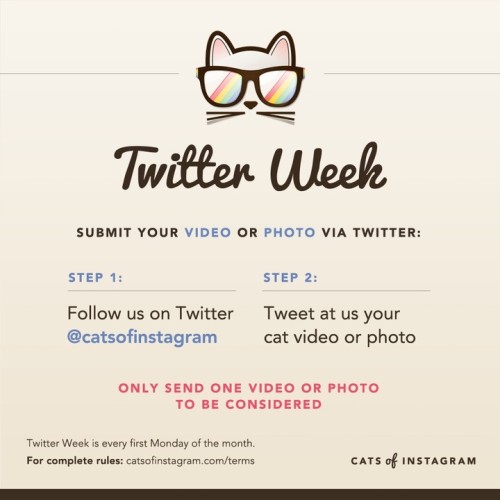
Read More

[source: https://instagr.am/p/B__TUepjfjY/ ]

[source: https://instagr.am/p/B_-qsjGn9fg/ ]

[source: https://instagr.am/p/B_8vrlSHVIw/ ]

[source: https://instagr.am/p/B_8_sS2l0_5/ ]

[source: https://instagr.am/p/B_8N7BtDkK0/ ]

[source: https://instagr.am/p/B_6Qm8-omtK/ ]


 I've always used a password with the iPhone, and I don't plan on ever removing the screen protection that also encrypts the handset. Touch ID made it even easier to unlock the phone, and then Face ID came. I said before that I wouldn't want to switch back to Touch ID now that I've experienced Face ID, and I won't take that back. But what happens if wearing a face mask will become the new normal for the coming years? What if something terrible happens and the vaccines don't work?
When Apple launched Face ID back in 2017, it was the most sophisticated phone unlock experience ever made. It still is, as very few smartphone makers replicated Apple's 3D face recognition system. Face ID is more secure than Touch ID and works even better once you get used to it. And it's not just for screen unlocking, as Face ID practically unlocks anything that has a password on the phone. It's super easy to use and set up.
The face mask ruins all of that. Apple's iPhone 12 models will all have smaller notches, several reports said, as Apple is looking to reduce the size of the notch. And it's likely that next year's iPhones will still come with Face ID support. But it'll be interesting to see whether the COVID-19 pandemic will force Apple to add Touch ID back to the iPhone at some point in the future. And if it'll happen, can Touch ID coexist with Face ID?
Apple did study the same under-screen fingerprint technologies that some Android handset makers have already deployed in their smartphones. Optical and ultrasound fingerprint sensors were detailed in Apple's patents longe before the iPhone X launched. In fact, we all thought the handset will have an under-screen sensor in the months before that preceded the phone's launch. And rumors do say that Apple is considering under-screen fingerprint sensors for future iPhones, maybe as soon as iPhone 12. But we're far from getting any confirmation.
Then again, Apple could figure out a way to make Face ID work when the wearer is using a face mask. But that's really wishful thinking from this particular Face ID user who's now forced to wear masks.
If anything, the COVID-19 pandemic showed that Apple is ready to adapt rapidly to what's happening with the world. Apple has been quick to close stores, it came up with its own coronavirus screening app, and it started displaying COVID-19 testing locations in Maps. On top of that, it developed face shields for medical personnel and worked with Google on a life-saving ingenuity, the COVID-19 contact tracing app. Even the new unlock screen is proof of Apple adapting to the disease. If this virus threat is here to stay for a few years, then maybe Apple will make all the necessary changes to iPhone design to make it as convenient and secure to use as it is now.
Until then, we'll just have to use passwords while wearing masks. Also, the iPhone SE is a great alternative solution to anyone looking for a new iPhone with fingerprint support.
I've always used a password with the iPhone, and I don't plan on ever removing the screen protection that also encrypts the handset. Touch ID made it even easier to unlock the phone, and then Face ID came. I said before that I wouldn't want to switch back to Touch ID now that I've experienced Face ID, and I won't take that back. But what happens if wearing a face mask will become the new normal for the coming years? What if something terrible happens and the vaccines don't work?
When Apple launched Face ID back in 2017, it was the most sophisticated phone unlock experience ever made. It still is, as very few smartphone makers replicated Apple's 3D face recognition system. Face ID is more secure than Touch ID and works even better once you get used to it. And it's not just for screen unlocking, as Face ID practically unlocks anything that has a password on the phone. It's super easy to use and set up.
The face mask ruins all of that. Apple's iPhone 12 models will all have smaller notches, several reports said, as Apple is looking to reduce the size of the notch. And it's likely that next year's iPhones will still come with Face ID support. But it'll be interesting to see whether the COVID-19 pandemic will force Apple to add Touch ID back to the iPhone at some point in the future. And if it'll happen, can Touch ID coexist with Face ID?
Apple did study the same under-screen fingerprint technologies that some Android handset makers have already deployed in their smartphones. Optical and ultrasound fingerprint sensors were detailed in Apple's patents longe before the iPhone X launched. In fact, we all thought the handset will have an under-screen sensor in the months before that preceded the phone's launch. And rumors do say that Apple is considering under-screen fingerprint sensors for future iPhones, maybe as soon as iPhone 12. But we're far from getting any confirmation.
Then again, Apple could figure out a way to make Face ID work when the wearer is using a face mask. But that's really wishful thinking from this particular Face ID user who's now forced to wear masks.
If anything, the COVID-19 pandemic showed that Apple is ready to adapt rapidly to what's happening with the world. Apple has been quick to close stores, it came up with its own coronavirus screening app, and it started displaying COVID-19 testing locations in Maps. On top of that, it developed face shields for medical personnel and worked with Google on a life-saving ingenuity, the COVID-19 contact tracing app. Even the new unlock screen is proof of Apple adapting to the disease. If this virus threat is here to stay for a few years, then maybe Apple will make all the necessary changes to iPhone design to make it as convenient and secure to use as it is now.
Until then, we'll just have to use passwords while wearing masks. Also, the iPhone SE is a great alternative solution to anyone looking for a new iPhone with fingerprint support.

[source: https://instagr.am/p/B_4nV3EHSJS/ ]

[source: https://instagr.am/p/B_2ynUtFXt4/ ]
 As numerous rumors from solid sources that date all the way back to Ming-Chi Kuo's reports last year, Apple's new iPhone 12 series is expected to merge the display design and the large, square rear camera arrays with the flat metal edges from the iPhone 5. The notch on the display is expected to be a bit smaller than it is on the iPhone 11 and the camera array on the iPhone 12 Pro models will reportedly add a LIDAR sensor, and that's exactly what Daehnert drew up.
If you've been following Apple rumors lately, you've undoubtedly noticed that there are some new faces who have been leaking iPhone 12 info. You also might not entirely trust them since they're still in the process of building track records. That said, there is another source that suggests this is indeed what Apple's iPhone 12 Pro will look like when it finally launches. What source is that you might ask? It's Apple.
As numerous rumors from solid sources that date all the way back to Ming-Chi Kuo's reports last year, Apple's new iPhone 12 series is expected to merge the display design and the large, square rear camera arrays with the flat metal edges from the iPhone 5. The notch on the display is expected to be a bit smaller than it is on the iPhone 11 and the camera array on the iPhone 12 Pro models will reportedly add a LIDAR sensor, and that's exactly what Daehnert drew up.
If you've been following Apple rumors lately, you've undoubtedly noticed that there are some new faces who have been leaking iPhone 12 info. You also might not entirely trust them since they're still in the process of building track records. That said, there is another source that suggests this is indeed what Apple's iPhone 12 Pro will look like when it finally launches. What source is that you might ask? It's Apple.
 If you don't recall, the illustrations above were pulled out of leaked iOS 14 code last month by developers who had access to the code. It was a huge leak but at the time, people noted that these were possibly just illustrations of a potential iPhone 12 design that hadn't yet been finalized. At this point, given all the leaks and rumors we've seen all over the web from sources with solid track records, it's more than safe at this point to say that the design has been finalized.
If you don't recall, the illustrations above were pulled out of leaked iOS 14 code last month by developers who had access to the code. It was a huge leak but at the time, people noted that these were possibly just illustrations of a potential iPhone 12 design that hadn't yet been finalized. At this point, given all the leaks and rumors we've seen all over the web from sources with solid track records, it's more than safe at this point to say that the design has been finalized.
[source: https://instagr.am/p/B_0xRO4l_Ua/ ]

[source: https://instagr.am/p/B_znGDTn8eM/ ]


[source: https://instagr.am/p/B_ywz-GlgqV/ ]
 Android:
Android:
 The following set of screenshots show how a user would tell the system that they’ve been diagnosed COVID-19 positive. The next set of images shows that the user will have to provide some sort of verification to validate their diagnostic. That means only users who were tested will be able to share a positive diagnosis with the app, and this will prevent potential abuse.
iPhone:
The following set of screenshots show how a user would tell the system that they’ve been diagnosed COVID-19 positive. The next set of images shows that the user will have to provide some sort of verification to validate their diagnostic. That means only users who were tested will be able to share a positive diagnosis with the app, and this will prevent potential abuse.
iPhone:
 Android:
Android:
 The following set of screenshots reveal how notifications will look like when the app tells a person they were in the proximity of a COVID-19 patient. The app will notify you when the contact happened and provide instructions on what steps to take.
iPhone:
The following set of screenshots reveal how notifications will look like when the app tells a person they were in the proximity of a COVID-19 patient. The app will notify you when the contact happened and provide instructions on what steps to take.
iPhone:
 Android:
Android:
 Finally, the next set of screenshots shows how an iPhone or Android user can opt out from COVID-19 exposure logging. The same screens will also show you the number of exposure checks and let you delete the data stored on the phone, which is a log of Bluetooth handshakes with other iPhone and Android handsets.
iPhone:
Finally, the next set of screenshots shows how an iPhone or Android user can opt out from COVID-19 exposure logging. The same screens will also show you the number of exposure checks and let you delete the data stored on the phone, which is a log of Bluetooth handshakes with other iPhone and Android handsets.
iPhone:
 Android:
Android:
 Some countries will use the Apple-Google API to build their own apps soon, Germany included. Others, like the UK and France, will go forward with apps that might not be as mindful of privacy, as they could collect additional data about users.
Some countries will use the Apple-Google API to build their own apps soon, Germany included. Others, like the UK and France, will go forward with apps that might not be as mindful of privacy, as they could collect additional data about users.
[source: https://instagr.am/p/B_yv8lFDuDZ/ ]

[source: https://instagr.am/p/B_x8BSxnh1m/ ]

 Apple's iPhone 12 Pro and iPhone 12 Pro Max design can be seen at the top of this post, and the design of the iPhone 12 models is directly above. They're quite similar with the exception of the camera array on the back of each phone. In addition to the two lenses on the back of the iPhone 12 phones, the Pro models get a third lens and the LIDAR sensor from the most recent iPad Pro tablets.
PhoneArena did a pretty good job of sticking to reliable leaks when creating these renders, so they should be a very good representation of Apple's upcoming new iPhone. That said, there are some mistakes. Several of the renders like the one below have a notch that isn't shaped properly. Also, the blog mocked up a Project(RED) iPhone 12 Pro, which is highly unlikely. Finally, you'll notice that the rear camera setup in all the images in this post is color-matched to the back of the phone, as is the case on the iPhone 11 series. The iPhone 12 is indeed expected to maintain that trend, but for some reason, most of PhoneArena's other renders have black around the rear camera lenses.
Apple's iPhone 12 Pro and iPhone 12 Pro Max design can be seen at the top of this post, and the design of the iPhone 12 models is directly above. They're quite similar with the exception of the camera array on the back of each phone. In addition to the two lenses on the back of the iPhone 12 phones, the Pro models get a third lens and the LIDAR sensor from the most recent iPad Pro tablets.
PhoneArena did a pretty good job of sticking to reliable leaks when creating these renders, so they should be a very good representation of Apple's upcoming new iPhone. That said, there are some mistakes. Several of the renders like the one below have a notch that isn't shaped properly. Also, the blog mocked up a Project(RED) iPhone 12 Pro, which is highly unlikely. Finally, you'll notice that the rear camera setup in all the images in this post is color-matched to the back of the phone, as is the case on the iPhone 11 series. The iPhone 12 is indeed expected to maintain that trend, but for some reason, most of PhoneArena's other renders have black around the rear camera lenses.


 Finally, 16GB of 3733MHz memory is now featured as part of the standard configuration for select models. The 2020 lineup is also the first to give consumers the option to upgrade to 32GB of RAM. Consumers who choose this upgrade will see better performance when editing images and running virtual machines.
Other than the revamped keyboard, the rest of the design is familiar, with a 3-pound aluminum body in either space gray or silver, a Retina display delivering more than 4 million pixels and 500 nits of brightness, Touch ID to log in and make purchases securely, and the Touch Bar for dynamic controls. The second-gen Apple T2 Security Chip checks to see if your software has been tampered with upon booting up and encrypts your data on the fly. It also protects your Touch ID information when you unlock your computer, enter a password, or make a purchase.
The new 13-inch MacBook Pro is available to order on Apple.com and in the Apple Store app starting at $1,299. The laptop will begin arriving to customers and in select Apple Store locations later this week.
Finally, 16GB of 3733MHz memory is now featured as part of the standard configuration for select models. The 2020 lineup is also the first to give consumers the option to upgrade to 32GB of RAM. Consumers who choose this upgrade will see better performance when editing images and running virtual machines.
Other than the revamped keyboard, the rest of the design is familiar, with a 3-pound aluminum body in either space gray or silver, a Retina display delivering more than 4 million pixels and 500 nits of brightness, Touch ID to log in and make purchases securely, and the Touch Bar for dynamic controls. The second-gen Apple T2 Security Chip checks to see if your software has been tampered with upon booting up and encrypts your data on the fly. It also protects your Touch ID information when you unlock your computer, enter a password, or make a purchase.
The new 13-inch MacBook Pro is available to order on Apple.com and in the Apple Store app starting at $1,299. The laptop will begin arriving to customers and in select Apple Store locations later this week.
As for how Apple's quarterly revenue breaks down across its product line, the iPhone accounted for $28.9 billion in revenue for the quarter, while the Mac and iPad accounted for $5.35 and $4.36 billion, respectively. Apple's Wearables and suite of Services, meanwhile, generated $6.28 and $13.34 billion in revenue.
Note that analysts were anticipating iPhone revenue to come in around $28.3 billion, Mac revenue at $5.2 billion, iPad revenue at $4.2 billion, Wearables revenue at $7 billion, and Services revenue to come in at $12.85 billion. Impressively, Apple bested analyst expectations across the board.
As a point of reference, Apple in the year-ago quarter saw iPhone revenue check in at $31 billion, Mac revenue at $5.5 billion, iPad revenue at $4.8 billion, Wearables revenue at $5.1 billion, and Services revenue at $11.4 billion.
"Our active installed base of devices reached an all-time high in all of our geographic segments and all major product categories," Apple CFO Luca Maestri added. "We also generated operating cash flow of $13.3 billion during the quarter, up $2.2 billion over a year ago." As Apple typically does following the March quarter, the company boosted its quarterly dividend to $0.82 per share, an amount payable on May 14. Incidentally, with the coronavirus being as unpredictable as it is, Apple did not issue any guidance for the June quarter. With year-over-year iPhone revenue falling by about $3 billion, shares of Apple are currently down about 2% in after-hours trading.
 As numerous rumors from solid sources that date all the way back to Ming-Chi Kuo's reports last year, Apple's new iPhone 12 series is expected to merge the display design and the large, square rear camera arrays with the flat metal edges from the iPhone 5. The notch on the display is expected to be a bit smaller than it is on the iPhone 11 and the camera array on the iPhone 12 Pro models will reportedly add a LIDAR sensor, and that's exactly what Daehnert drew up.
If you've been following Apple rumors lately, you've undoubtedly noticed that there are some new faces who have been leaking iPhone 12 info. You also might not entirely trust them since they're still in the process of building track records. That said, there is another source that suggests this is indeed what Apple's iPhone 12 Pro will look like when it finally launches. What source is that you might ask? It's Apple.
As numerous rumors from solid sources that date all the way back to Ming-Chi Kuo's reports last year, Apple's new iPhone 12 series is expected to merge the display design and the large, square rear camera arrays with the flat metal edges from the iPhone 5. The notch on the display is expected to be a bit smaller than it is on the iPhone 11 and the camera array on the iPhone 12 Pro models will reportedly add a LIDAR sensor, and that's exactly what Daehnert drew up.
If you've been following Apple rumors lately, you've undoubtedly noticed that there are some new faces who have been leaking iPhone 12 info. You also might not entirely trust them since they're still in the process of building track records. That said, there is another source that suggests this is indeed what Apple's iPhone 12 Pro will look like when it finally launches. What source is that you might ask? It's Apple.
 If you don't recall, the illustrations above were pulled out of leaked iOS 14 code last month by developers who had access to the code. It was a huge leak but at the time, people noted that these were possibly just illustrations of a potential iPhone 12 design that hadn't yet been finalized. At this point, given all the leaks and rumors we've seen all over the web from sources with solid track records, it's more than safe at this point to say that the design has been finalized.
If you don't recall, the illustrations above were pulled out of leaked iOS 14 code last month by developers who had access to the code. It was a huge leak but at the time, people noted that these were possibly just illustrations of a potential iPhone 12 design that hadn't yet been finalized. At this point, given all the leaks and rumors we've seen all over the web from sources with solid track records, it's more than safe at this point to say that the design has been finalized.
Like the application currently under study in France , it creates anonymous identifiers for each user and stores all the data locally on their device using strong encryption. Unlike the French application, its users can then decide if, when and what information they wish to publish. In addition, users can voluntarily donate their data to support scientific analysis and improve government decision-making.With all that in mind, it's nuclear what France will do to for contact tracing in the near future. But whatever the country decides, it may affect the policies of other EU members.

Almost across the board, the iPhone SE beats the current Pixel 3a, which is our favorite mid-range phone. It has an IP rating, the Pixel 3a doesn’t. It has a flagship chipset, the Pixel 3a doesn’t. The SE has wireless charging, amazing haptics, and ambient color-adapting True Tone. The Pixel 3a might have a better camera, but that’s just one point in its favor. In almost every other metric the 2020 iPhone SE meets or exceeds not just the Pixel 3a, but every other mid-range Android phone at the $400 price — outside the question of software, anyway. And it looks like the SE will probably beat Google’s upcoming Pixel 4a, too. Honestly, I’m upset that there isn’t a $400 Android phone that’s as all-around good as the new iPhone SE, but Apple is just able to compete with its economy of scale here in a way that Android manufacturers can’t.Even if we disregard price, the iPhone SE's performance can easily outperform Android devices with Snapdragon 855 chipsets. What's more, it even comes out on top when going toe-to-toe with top of the line Android handsets with Snapdragon 865 chipsets. In one review that made the rounds earlier this week, Apple's iPhone SE was able to outmatch Samsung's Galaxy S20+. And whereas the iPhone SE costs $399, the Galaxy S20+ will set you back $1,199. Apple doesn't release iPhone sales figures anymore, let alone provide sales breakdowns across specific models, but it stands to reason that the iPhone SE will prove to be an incredibly popular device over the next few months.

[source: https://instagr.am/p/B_qo3vIlGTp/ ]